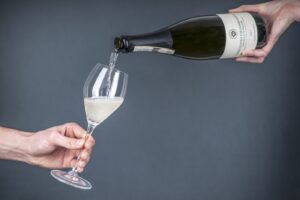Food and wine made the difference (although slight, -3%) in the overall decline in tourism in Italy. There were from 5.5 to 6 million wine lovers traveling around Italy for a turnover worth 3 billion euros (+20% over 2008). Top spots? Tuscany first, followed by Piedmont and the “new entry” Veneto, which has surpassed Umbria and Puglia. The wine world, however, is still considered elite, so that out of the 20 million Italians in 2009 who chose food and wine holidays, only 13% were aware of being part of the “wine tourist” world. These are the latest trends in food and wine tourism in Italy, according to the VIII Annual Report “Observatory on wine tourism in Italy” of the Wine Cities, prepared by Censis Ltd Services (marketing research services) and presented at Bit 2010, the International Tourism Exchange, in Milan. The work in progress on the “Commission for the promotion and support of food and wine tourism in Italy” of the Ministry of Tourism, chaired by the Minister Michela Vittoria Brambilla, which includes the Wine Cities, was open to the public. (info: www.cittadelvino.it).
The wine industry has the highest average expenditure per capita (149 euros per day). Territorial traditions and culinary culture are the key areas that Italian tourism focuses on as an alternative to traveling out of the country.
“If wine and food tourism is the main voice of stability for the entire industry,” emphasizes the chairman of the Wine Cities, Giampaolo Pioli, “capable of bringing benefits to all, from farms to restaurants, from reception to large and small municipalities, it is clear that the area needs more attention; but so far funds are still scarce. It is necessary to create a system with regional marketing strategies and financial interventions, targeted to address the challenges of competitiveness and develop the wine tourism role for the benefit of local economies”.
According to the report from Wine Cities / Censis, thanks to its characteristics of proximity, short breaks, convenience and accessibility, food and wine tourism is no longer a “niche” but is widespread and trendy. It is very slightly influenced by the economy, incomes and consumption, and has much potential yet to be discovered. It is tourism for adults, but with an easy generational changeover: 40% are in their 30s and 30% are under 30. However, of more than 20 million Italian tourists in 2009 who participated in various wine related activities, such as: visits to wineries (13 million); vineyards (12 million); wine itineraries (8 million); wine restaurants (5 million); food and wine festivals (17 million), only 2.6 million described themselves “wine tourists”, as they considered it “elitist” and only for wine experts. Among these tourists, 71.8% (nearly 1.7 million Italians) took wine trips at least once in 2009, two out of 3 between 1 and 3 trips and a minority more than 3 times per year (5.1%). It is estimated that among people who have never had a wine touring experience nearly 3 million would like to do so in the future.
The two top destinations in 2009 were the wine regions of Tuscany, visited by 44% of wine tourists and Piedmont (20%); the “new entry” Veneto, 12.5% exceeding Umbria (9.2%) and Puglia (7.3%); also on the rise Trentino Alto Adige and Sicily, while Marche and Calabria are in decline. And among the events dedicated to the world of wine in Italy, the most loved and well known, takes the lead, Vinitaly (International wine & spirits exhibition), followed by Open Cellars (Cantine Aperte) and Goblets of Stars (Calici di Stelle) at equal ranking, and then Welcome to Harvest (Benvenuta Vendemmia). There are 1500 Italian municipalities in the winemaking territories, but the resources available to them are extremely scarce. Six out of 10 mayors concord that the most effective way to expand wine tourism is communication, followed by creating local events, itineraries, training for employees and the urgent need to vigorously protect their landscape.
Copyright © 2000/2026
Contatti: info@winenews.it
Seguici anche su Twitter: @WineNewsIt
Seguici anche su Facebook: @winenewsit
Questo articolo è tratto dall'archivio di WineNews - Tutti i diritti riservati - Copyright © 2000/2026








































































































































































































